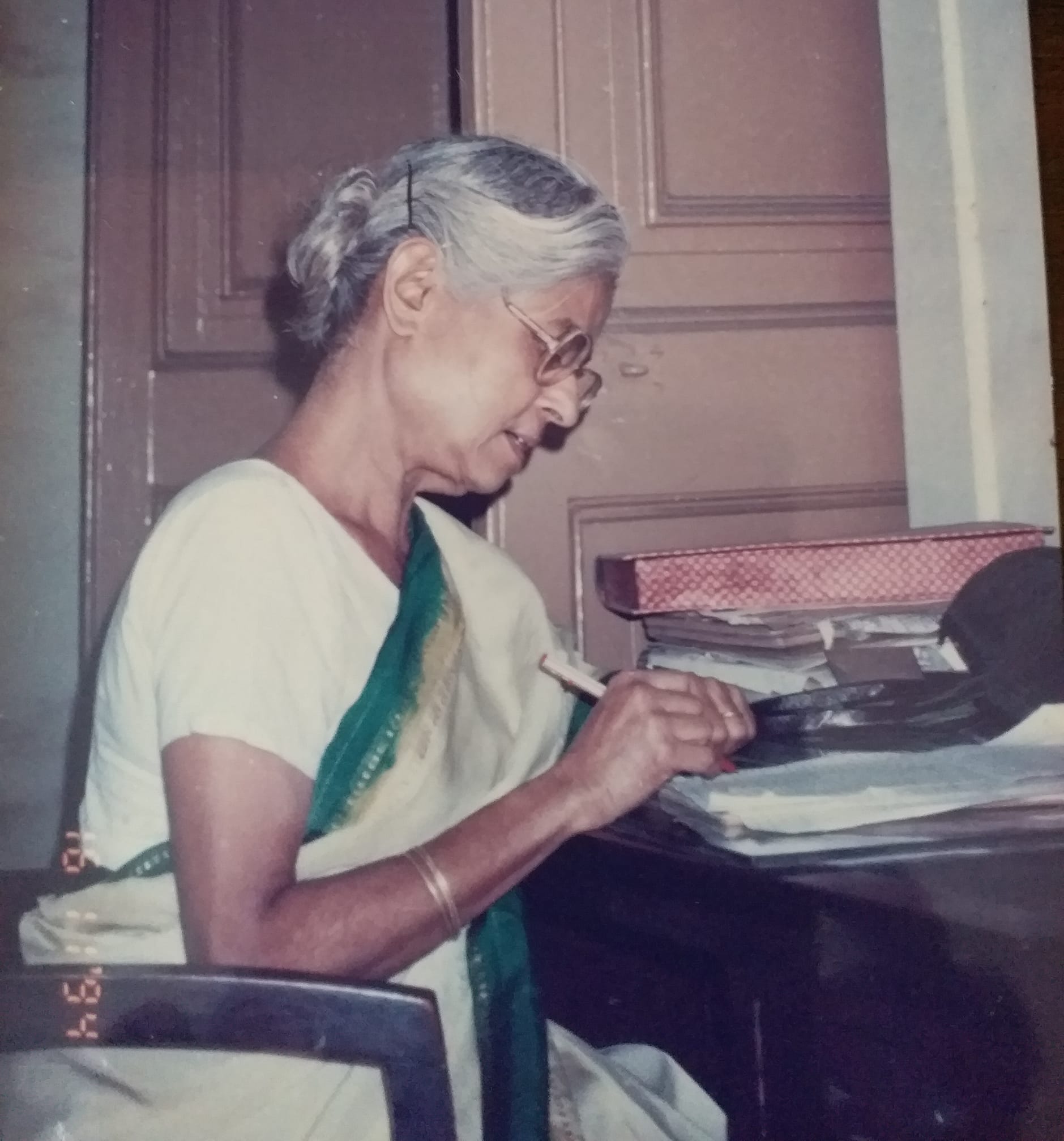When I joined Presidency College in November 1992, as a student of English Honours, I had joined with my own baggage of historical knowledge about the institution. I knew all about the original Hindu College; of Derozio and his ‘Young Bengal’; the ‘stairway to heaven’; of Amartya Sen and Satyajit Ray and Aparna Sen; of the Naxal rebels of the 1970s, the ‘gherao’ of the Principal and the standstill of the University. I knew all that! And of course the ‘tyesh’ girls who famously smoke and drink.
But all that baggage melted away when I actually started studying there. For one, I’m myself overturned some of the stereotypes – because I didn’t smoke and drink. And I was not ‘tyesh’. (Though I think I’ve always been smart and confident).
Every Department in Presidency had its own lore – and none more so than the English Department, which was one of the first to be established. Among our teachers, the senior most was Kajal di – Prof. Kajal Sengupta – who was already a living legend by then. She was the first female lecturer of the college: had joined it in 1958, at a time when there were no separate loos for women! She had done her graduation from Loreto College, went to Cambridge thereafter, and then came back and joined Presidency. We once saw a photograph of hers from that time. She was soooooo beautiful! One of our classmates, on seeing the photo, said: “I wish I had a time machine… could then go and meet this young Kajaldi”. He voiced our collective sentiment!
Kajaldi had silky white hair which she tied up in a bun. The red dot on her forehead was that of a lipstick; high power spectacles covered her big eyes and sat steady on her sharp nose. And if you saw her sideways, you then noticed the kajal that gave her her name – two short black lines of kohl coming outward from the rim of her eyes. She was short and slim, and carried loads of books to class – books that wobbled above and below the long attendance register we had. I’d never seen her pin her sari. She wore only white – white saris with broad borders. They were never too bright, but didn’t lack colour either: she wore a range of sober, elegant colours and patterns; a lot of them dure – bangle lines, in contrasting colours.
She reminded me of my mother, who wore nothing but Bengal cotton, taat, all her life– at home and outside; and her taste was very sober. Hence, in my mind, taat has always been associated with sobriety and elegance. And thriftiness, as Ma would never buy an expensive saree.
Kajaldi made a fashion statement out of white cottons. Sorry, style statement – fashions come and go, style remains. She wore the sari in the way I like best – with the par covering her chest diagonally, and the aanchal left hanging as it should be.
In her introductory lecture on English Literature, I remember, she had talked of the woods and the trees. That we should be mindful of both. We should know the individual trees well, but never lose sight of the forest of which it is a part. The literary texts that we were taught were the trees; while History of English Literature (HEL) was the forest. She taught my favourite novelist (Thomas Hardy), Blake’s poems, the Renaissance, among other topics. But in the tutorial, we covered everything. How I waited for those tutorials the whole week! I got her as my tutor in the 3rd year, and I’d like to believe that I’d earned that, after doing well in Part-I. I still retain, and treasure, those tutorial exercise-books, with Kajaldi’s comments in a sprawling handwriting written all over: between the lines, along the margins, and on the left-hand side page, which was expressly kept blank for the purpose!
Kajaldi had married late. For a long time, she enjoyed life as a single, independent woman. She had a separate set of keys, she’d told me once; and when she returned home late at night, while she unlocked the door with her own keys, she felt a delicious sense of freedom.
She did not have children, but brought up her nephew and niece as her own. And every year, for more than 3 decades, mothered a new batch of students in the English Department. As a teacher and tutor, she was without equal, and no one questioned or contested that in a Department where there was no dearth of talented teachers. Some of her younger colleagues were once her students – the brightest. So the Department had a true ‘parampara’.
What she meant to her students – several generations of them – became amply clear on the day of her memorial service at her home in February 2006. Scores of them came – from the relatively young to the very old – to pay their last respects to a teacher who epitomized intellectual rigour and honesty and who taught both passionately and well. I remember sitting among them, feeling completely at one with them, shedding silent tears.
She is one of the best teachers that I’ve had the privilege of being taught by & I was lucky to continue to receive her affection long after I ceased to be a student. As a teacher and human being, she has left an indelible mark upon me. I still dream of her!


